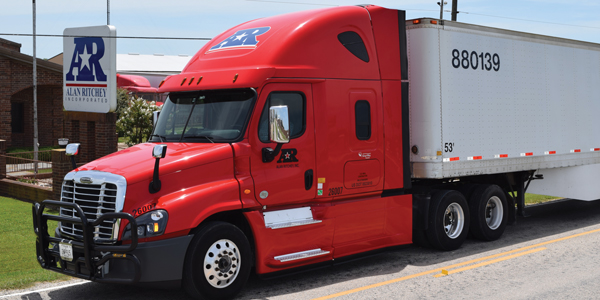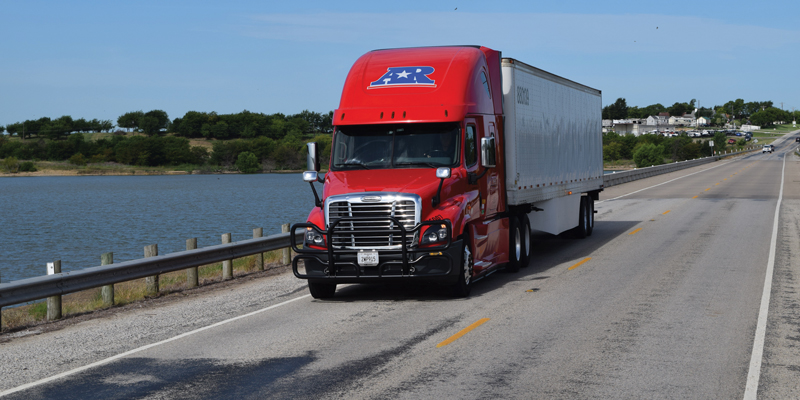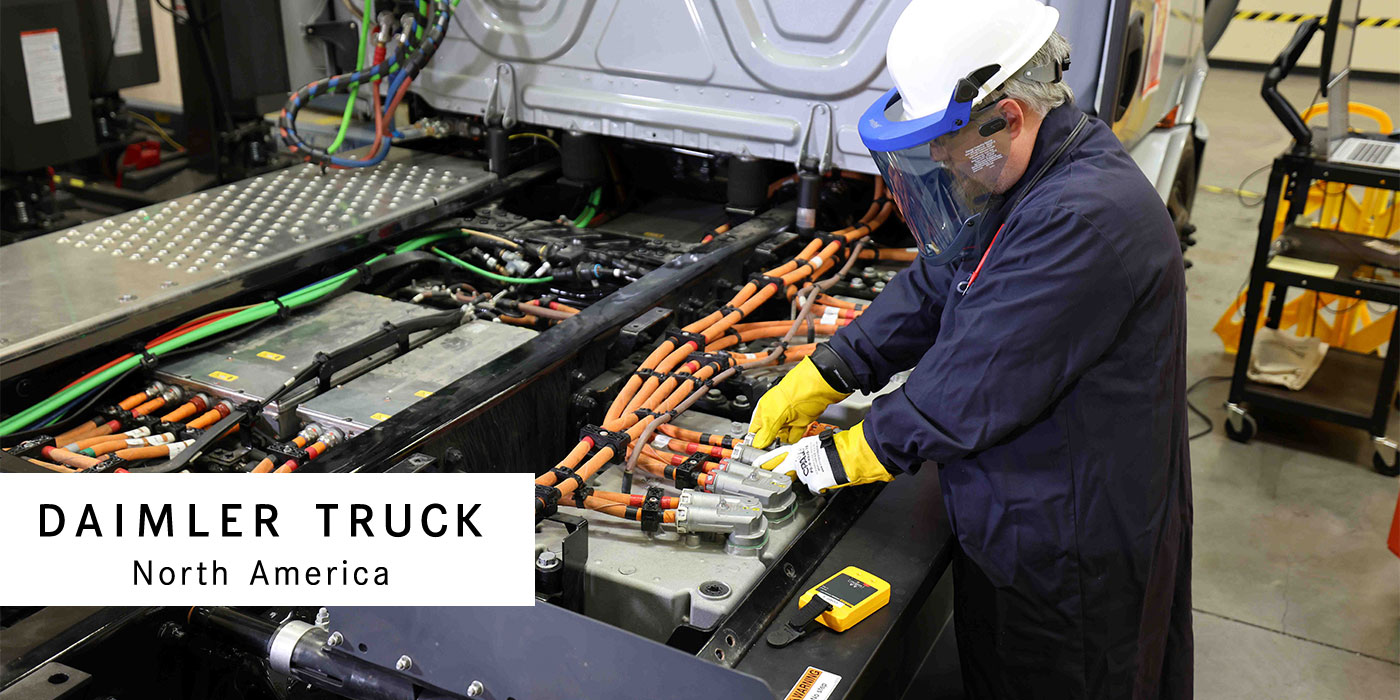Meeting customer requirements is nothing new for Alan Ritchey Inc. (ARI). While the Valley View, Texas-based family owned and operated carrier provides services in several government, industrial, agriculture, energy and transportation sectors from coast to coast, since it was founded in 1964 it has served as a contract mail hauler for the United States Postal Service (USPS).
“Our company’s capabilities continue to be demonstrated by excellent on-time delivery performance for the USPS over dedicated routes and emergency contracts,” says Dave Allison, senior vice president. “At the same time, being reliable, on time and delivering quality service at a fair price is our focus across all of our operations.
“ARI is committed to leveraging technology to continually improve,” Allison continues. “With the latest solutions that suppliers have to offer, we can make more informed decisions, comply with regulations, enhance safety and efficiency and increase productivity.”
Most recently, in part to help achieve those objectives, ARI began using a new in-cab solution in its tractor fleet. “We’ve been an AOBRD user for a number of years and were grandfathered in under the ELD mandate until this December, so that meant the need to switch platforms,” Allison explains.
Narrowing choices
“In the summer of 2018 we began evaluating ELDs,” Allison continues. “We quickly narrowed our choices down to four devices and then worked with those suppliers to make our expectations known, including our integration needs with our TMW Systems dispatch and enterprise management solution. We talked to other users of their products as well and eventually tested two ELDs on four trucks.”
ARI is now using Orbcomm’s ELD and in-cab telematics solution for GPS tracking and to automate compliance with ELD and hours-of-service rules. The system also collects data from vehicle systems and provides analytics and reporting via FleetManager, Orbcomm’s web-based platform. To manage its dry van fleet, ARI had already been using the company’s solar-powered trailer monitoring technology.
“ARI is committed to leveraging technology to continually improve.”
Dave Allison, senior vice president
“We wanted to have a comprehensive view of all our assets on one platform, including live and scheduled status updates whether trailers are in transit or in the yard,” Allison says. “With a centralized view, we can enhance productivity, communications and customer service.
“That’s especially important for meeting tracking information and security requirements for the USPS,” Allison adds. “It’s also helpful to have data for scheduling service and inspections based on accurate odometer readings or elapsed time so we can maximize asset utilization.”
Allison also notes that the Orbcomm products were easy to install for technicians at the carrier’s three shops, and that with little training, driver acceptance has been excellent. Support, training and on-site assistance from Orbcomm has also been very good.
Finding the right technology
ARI’s comprehensive approach to finding the right technology and suppliers for its operation extends to its equipment as well. In the fleet are 113 tractors, primarily 2015 through 2019 model year Freightliner Cascadias, and 246 trailers, the newest of which are Hyundai HY-Cube dry vans.
“Safety, fuel economy, total lifetime cost of operation and input from drivers and technicians all influence our specification decisions,” Allison says. “Return on investment analyses can be complicated, but we track per-mile costs for maintenance, and we monitor resale values as well as the purchase price for new vehicles.
“That helps us determine how long we can run a tractor economically,” Allison continues. “We try to trade tractors every four years and replace about one fourth of the fleet annually.”
With relay and team operations in place to haul mail on the tight schedule of the USPS, Allison explains, ARI tractors cover between 230,000 and 270,000 miles annually. That mileage makes fuel efficiency extremely important, he notes. In 2019, ARI was named a SmartWay High Performer for its efficiency, placing the company among the just over 2% of SmartWay carriers in the top performance range for all metrics.
ARI drivers are all focused on operating efficiently, Allison points out, while the carrier’s specs are also aimed at improving fuel economy. For example, ARI specs include automated manual transmissions set up for progressive shifting, some multi-torque engines, and powerplants programmed for a maximum 65 MPH pedal speed and 67 MPH when the cruise control is activated. A terrain sensing feature in adaptive cruise control systems, Allison adds, helps save fuel by providing the ability to climb hills in top gear.
Other fuel saving specs at ARI include Transtex Edge aerodynamic trailer side skirts and CrossFire Dual Tire Pressure Equalization Systems from Dual Dynamics on tractor drive and trailer axles.
Focused on safety
“We’re equally focused on safety,” Allison says. “Our tractors have the most advanced safety features, including adaptive cruise control and WABCO OnGuard collision safety systems with Active Braking. We also spec Bendix AutoVue lane departure warning systems in day cabs.
“We’re also working with truck OEMs and system suppliers to help develop a factory installed option for lane departure warning systems that would alert drivers in sleepers using seat cushion vibration,” Allison adds. “That way the driver that is off-duty is not disturbed if the system is activated.”
“Our tractors have the most advanced safety features,
Dave Allison, senior vice president
including adaptive cruise control and WABCO OnGuard collision safety systems with Active Braking.”
Recently as well, ARI began outfitting its tractors with Ex-Guard grille guards. “We tested the guards and came to the same conclusion that MVT Solutions did when it evaluated them for the manufacturer: that the Ex-Guard grille guards do not have a negative impact on fuel efficiency,” Allison relates.
“The results indicated that we could benefit from their ability to prevent costly front-end damage without suffering a fuel economy loss,” Allison continues, “and that we’d realize a return on our investment in lower maintenance costs.
“Our three shops take care of most maintenance for the ARI fleet,” he adds, “and we use FleetNet America for most road breakdowns. All service activity for our fleet is managed using TMT Fleet Maintenance software. With an aggressive maintenance program we can increase equipment longevity and resale values, and decrease our costs.”
Unparalleled service

This helps ARI offer an unparalleled combination of quality, service and reliability for its customers, Allison says. “By combining a customer focus, experienced employees and innovative technology, we can provide the best possible value to our customers,” he says.
“Our standards and goals are high and we don’t believe in or settle for anything less,” Allison adds. “We are determined to deliver more than expected to maintain and continually improve customer satisfaction.”
Tractor specifications
- Model: Freightliner Cascadia, 126-in. sleeper
- Wheelbase: 233 in.
- Engine: Cummins X-15
- Transmission: Eaton Fuller automated manual
- Brakes: Meritor air disc
- ABS: WABCO 6S/6M
- Wheels: Alcoa aluminum
- Tires: Michelin X low profile
- Drive Tire Pressure Monitoring: Dual Dynamics CrossFire
- 5th Wheel: Jost JSK37, stationary
- Fuel Heater: Arctic Fox, in tank
- Block Heater: 1500W/115V
- Fuel/Water Separator: Davco 485
- Mirrors: heated, aerodynamic, LH and RH remote
- Lighting: LED
- Fuel Tanks: dual 150 gal.
Trailer specifications
- Model: Hyundai HY-Cube
- Length: 53 ft.
- Height: 12 ft., 6 in.
- Rear Door: TODCO; ArmorPlate roll up, EverWare exterior hardware
- Side Skirts: Transtex Edge
- Landing Gear: Jost
- Axles & Suspensions: Hutchens; leaf spring
- Brakes: Bendix Air Disc
- ABS: WABCO 4S/2M
- Wheels: steel
- Tires: 22.5-in. low profile
- Tire Pressure Monitoring: Dual Dynamics CrossFire
- Lighting & Electrical: Truck-Lite LED














